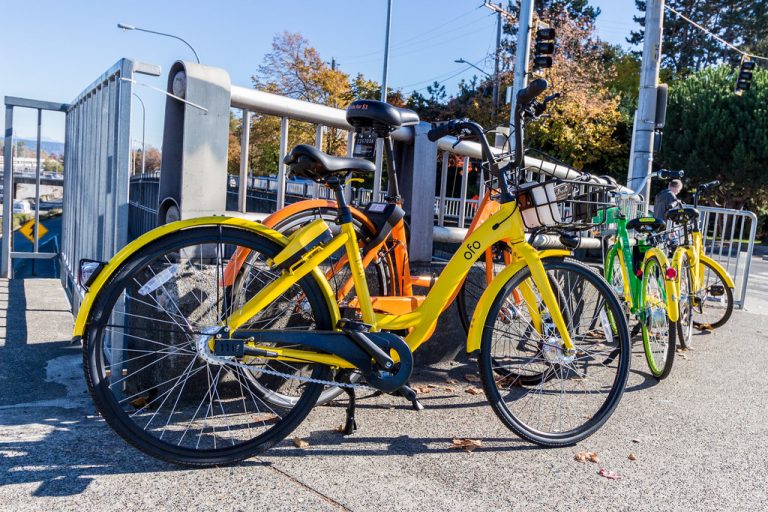Published on May 21, 2020

In the past couple of years, if you lived in a major, or even mid-sized city, you were likely familiar with bike-share bikes.
Whether propped against a tree, strewn along the sidewalk or standing “docked” at a station, the often brightly colored bikes with whimsical company names promised a ready means to get from Point A to Point B.
But one person’s spontaneous ride is another person’s commute to work. Prior to the COVID-19 pandemic, in cities where bike-share systems have been introduced, bike commuting increased by 20%, said Dafeng Xu, an assistant professor in the University of Washington’s Evans School of Public Policy & Governance. Xu studied U.S. cities with and without bike-share systems, using Census and company data to analyze how commuting patterns change when bike shares become available.
“This study shows that bike-share systems can drive a population to commute by bike,” said Xu, whose study was published May 11 in the Journal of Policy Analysis and Management.
Bike-share systems, common in cities in Europe and Asia, were launched in four U.S. cities in 2010 and as of 2016 had grown to more than 50. Not all systems have been successful: Convenience – how easy it is to find and rent a bike – is the key. In Seattle, for example, a city-owned bike-share program failed in 2017 due largely to a limited number of bikes and a lack of infrastructure, but private companies in the same market thrived prior to the pandemic.
Continue reading at UW News.
Originally written by Kim Eckart for UW News.